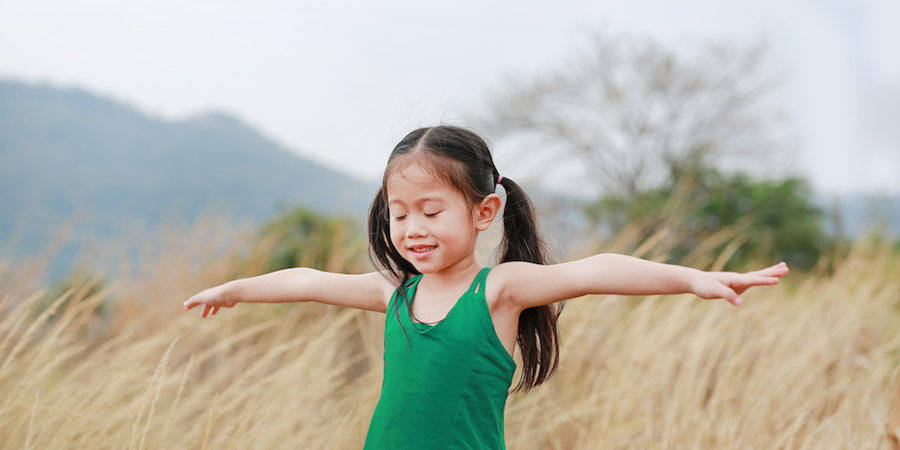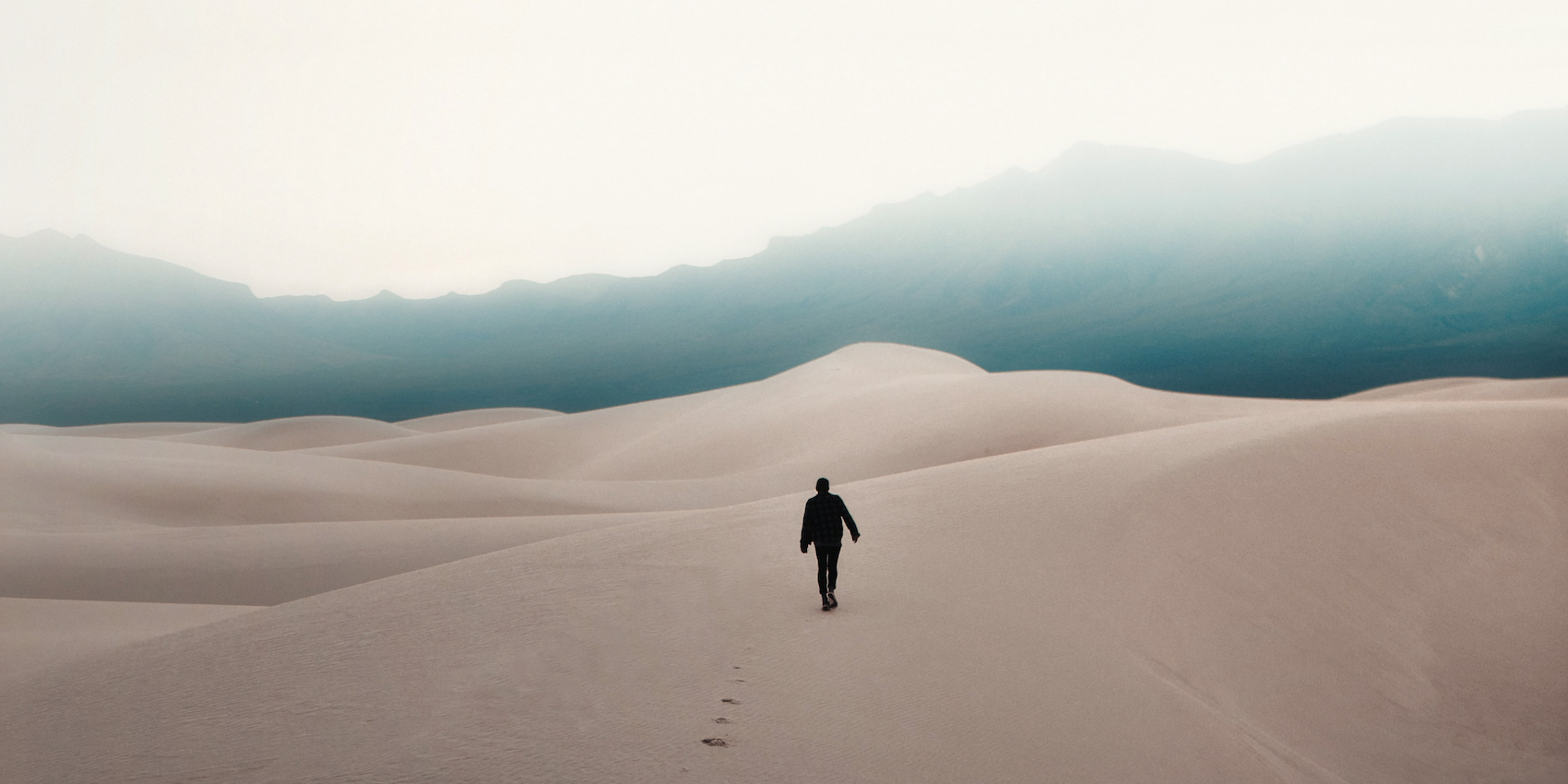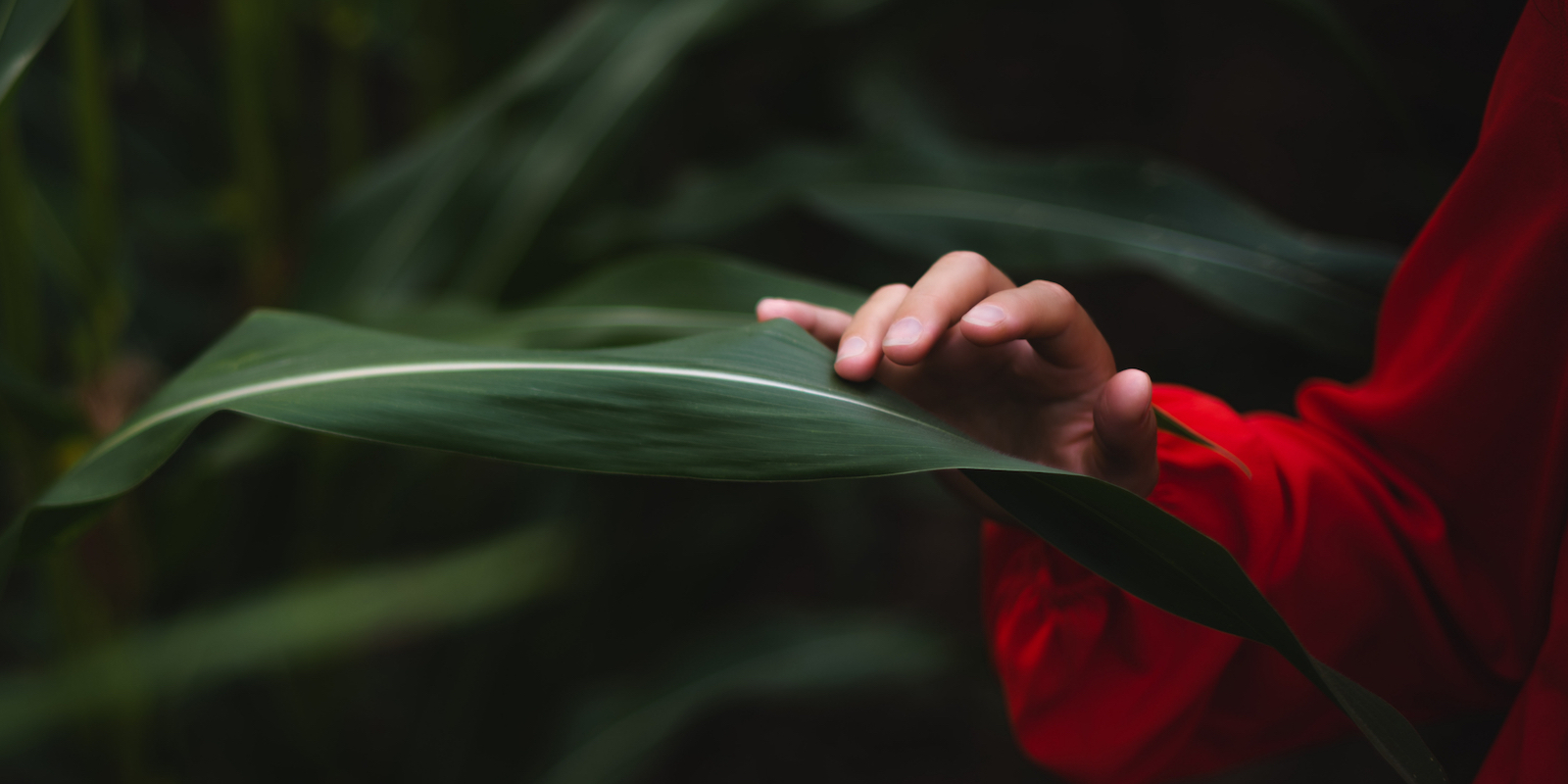Alison Serour shares playful exercises that gently help children to relax and meditate and can create a routine for bringing awareness and inner peace into their lives. Discover a guided meditation game for kids at the end of this article.
How To Teach Children to Relax & Meditate
I want my kids to love meditation, just like I do. My heart knows the importance of guiding them to become aware of their secret, magical, True Voice inside yet when I have tried conventional meditation techniques with them, like “close your eyes and focus on your breath” it just hasn’t worked to relax them. In truth, it became a challenging fight getting them to sit still and meditate.
But I just couldn’t give up! So I had two thoughts:
- Since scientific research shows us that from the age of 6 to 12, most children’s brain waves naturally accelerate to a state called “Alpha”—which is the same state that an adult can achieve through meditation and daydreaming—do we need to actually “get” them to meditate if they are already in the alpha state?
- What if I could help them to focus inwards, relax, use the meditative tools of visualization and still have fun with them at the same time? Could I invent “games” that help them naturally tap into their awareness?
I was eager to try it out and create games to play with them. I brainstormed, thinking about safe spaces for them to play, relax and gently become aware and try out meditative tools. So together we formed a few relaxing “Meditation Games” and I would like to share my experience with them with you.
Meditation Games To Help Your Child Relax & Become Aware
In The Bathtub
Our first “game” started with the relaxing running water of their bath. As we turned it on, for a few precious moments we closed our eyes and tried to focus our attention on the sounds and how they made us feel.
After a long silence, my son who is 8 announced that he heard waterfalls and began to describe why waterfalls were created so all the animals living in the forests could “survive and stuff”. Then, my 6-year-old began to rhythmically sing the beautiful sounds he heard that his bath water was sharing with him. And me, well I slowly watched those cleansing waters pour from the faucet but all I could hear was my children. It was as if through the sounds of their bath running, I heard their shining souls sharing and connecting.
The Candle Flame
For the second “game”, it was time to turn the lights off and light a candle in the dark to relax as we watched the candle flame.
I stood up and flipped the switch off. As the room went dark I stumbled a bit, we shared a giggle and I struck a small match, which magically lit up a slim, white candle. I asked my children to gaze into the flames and describe the colors they saw, what they felt, what they heard, what they thought, even what they smelled.
By asking them and making sure to include all possible sensory awarenesses they could be experiencing I knew each one of them would be able to connect in their own unique way and then would be able to share about their experience with our family. If you are trying these “games” my advice is to make sure to include prompts and questions encompassing all of their senses.
As I listened and learned, their conversation sounded something like this:
“I see blue. Blue!”
“Purple!”
“It’s sparking”
“I see a little bit of pink!”
“Yea, me too, at the bottom, of the bottom.”
“I see a little bit of yellow.”
“There is obviously yellow, and there is a great amount of white if you look closely”
“Green”
“Purple”
“Like a flashing light, it’s like one of those things that is green and spinning around and around it’s green.”
“I’m trying to blow it out”
“It’s going like this, but it’s actually going like this, like a police siren”
“I see colors too, do you, Mom?”
As I write this, remembering back to experience the scene, I relive my excitement to hear them, to hold onto every word they shared, to listen to them. I discovered through them all that I desired to learn about how to experience relaxation and meditation with kids, and how to share this experience with others who are interested to slowly try to incorporate this priceless gift into their families as well.
Gentle Body Love
After the bath, I wrap them in warm towels that I have ready in the dryer and massage them with lavender-infused oil that helps relax their minds and bodies even more. They absolutely love this.
As I massage their skin I speak to that part of their body, starting with their feet. I tell each toe how much it is loved and then they chime in and start to repeat “I love you toes, thank you feet for being with me all day and thank you for all the places we walked and ran and visited today”. We go up their body relaxing their body parts and talking to them as well. I find this really works on a cellular level to inject positive energy into their body/mind/soul connection. I sometimes even have them look in the mirror and say to themselves “I love you”.
Read more: Psychotherapist and meditation teacher Dorothy Ratusny emphasizes the damaging effects of lacking self-love in children all through adulthood.
Every Child Is Different & Unique
Remember that all children are different which is what makes your child unique. My children are relatively calm by nature so these games were engaging for them and they were able to go with the relaxing flow.
If you have children who are highly energetic, I suggest you try these games on yourself first so you have more of a handle on the experience before trying it with them. This way, you can also use your intuition and creativity to plan and execute what will be the best relaxing logistical set up for your child(ren) before introducing them to the exercises. This can support both you and your child once you are ready to try these relaxation methods together.
If you are trying traditional “close your eyes and meditate” relaxation style practices with your child(ren) and it’s going well, that is wonderful and I suggest you continue with that as much as they are comfortable with the practice. Try to make sure it is child-led to not to push them too much but rather giving them space of choosing to meditate. Perhaps offer them to join you for one of your own shorter practices through which you can bond.
Read more: Mindfulness and meditation teacher Fleur Chambers shares her concept of the “4 C’s” to increase family resilience and create more mindful moments.
How To Introduce More Traditional Meditation To Children
If you are like me and have a hard time introducing your children to traditional practices, be patient. Here are a few tips:
- Give your kids time and space to come to meditation on their own.
- Make sure to practice what you preach and stay calm as much as you can. (I know this is easier said than done!)
- Make sure your kids know that they are more important to you then your meditation practice—meaning, don’t ignore their needs in order to fit your mediation into a time when they really need you to be there for them.
- Have fun with your kids and meditation!
Discover hundreds of free guided meditations for kids that teach to manage the ins and outs of daily life at a young age.
My kids are my greatest teachers. When I am relaxed, they are relaxed. I love to learn from them as they consistently reflect back to me my greatest joys and my greatest fears and everything in between!
Try this guided relaxing meditation game by Alison Serour and Spirituality for Kids with your own child(ren) or grandchild(ren). Discover more guided meditations by Alison Serour in the Insight Timer app.
- For Kids: Discovering Your True Voice Spirituality for Kids and Alison Serour 8:45
Read more: Bedtime stories are an enriching experience for bodies and minds and do a lot more than help our minds wind down after a busy day. Learn about the significant changes that are happening in children’s developing brains.







